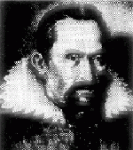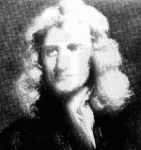Scientific Explanation
 Johannes Kepler (1571-1603), a German astronomer and mathematician, discovered certain laws of planetary motion. Kepler’s laws state that every planet follows an oval-shaped path in orbit around the sun, and that an imaginary line drawn from the center of the sun to the center of a planet sweeps the same area in a given time.
Johannes Kepler (1571-1603), a German astronomer and mathematician, discovered certain laws of planetary motion. Kepler’s laws state that every planet follows an oval-shaped path in orbit around the sun, and that an imaginary line drawn from the center of the sun to the center of a planet sweeps the same area in a given time.
 Sir Isaac Newton later used Kepler’s laws to arrive at the principle of universal gravitation. Newton, one of the most important figures in the history of science, made significant contributions in the fields of physics, astronomy and mathematics. He explained the laws of motion and universal gravitation.
Sir Isaac Newton later used Kepler’s laws to arrive at the principle of universal gravitation. Newton, one of the most important figures in the history of science, made significant contributions in the fields of physics, astronomy and mathematics. He explained the laws of motion and universal gravitation.
These laws apply to any body in orbit, including satellites that circle the earth.
The Funnel’s center hole represents the sun, and a rolling ball circling the center represents a planet in motion. Gravitational pull is represented by the downward curve of the Funnel’s surface.
The steeper the curve, the greater the pull on the ball. Just as gravity pulls a planet, it gets stronger toward the center hole. As the ball circles and descends, its energy of position is replaced by energy of motion. This is why a planet orbits at greater speeds when it nears the sun and slows down when it moves further away.
When William Kantz at Hypertek realized that coins would roll on the surface as well as balls, he began research and development on this device. By using coins to demonstrate the laws of planetary motion, the Hyperbolic Funnel offers much more than a fun way to learn. IT MAKES YOU MONEY!


